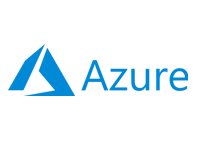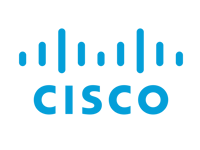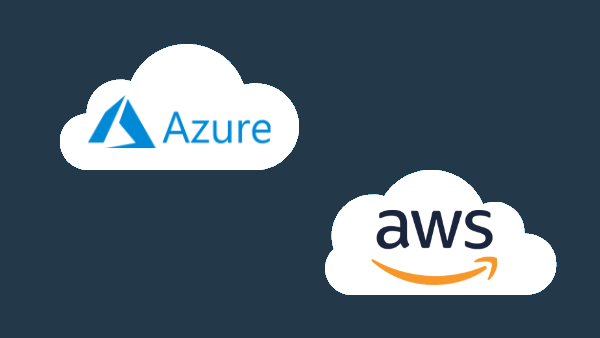Failover Concept Using Sky Computing Architecture

In today’s fast-paced digital environment, ensuring the high availability of critical applications is essential. Downtime can result in lost revenue, reduced productivity, and tarnished reputations. This is why many organizations are leveraging multi-cloud architectures to build robust, failover-ready systems. In this post, we’ll explore a failover concept using Sky Computing architecture, where a critical application is deployed across two major cloud providers: AWS and Azure, with a Sky Node on each.
What is Sky Computing?
Sky Computing elevates cloud computing by enabling seamless interoperability across
multiple cloud providers. It allows resources, applications, and workloads to
operate across various cloud environments on a unified computing layer above the
clouds. This approach lets you build a scalable, cohesive architecture that
harnesses the strengths of different providers.
The Multi-Cloud Setup: AWS and Azure
In this scenario, we have a critical application deployed with one Sky Node on AWS
and another on Azure. These Sky Nodes are interconnected, allowing them to act as a
single distributed system while taking advantage of the specific benefits each
platform offers. Together, this setup offers a failover mechanism that guarantees
your application remains available, even if one cloud provider experiences an
outage.
The Failover Concept: Ensuring Business Continuity
The core of this failover strategy is to make sure that if one node (on AWS or
Azure) fails, the other node takes over immediately without any disruption to the
end user.
Here's how it works
-
Active-Active Deployment
In this architecture, both the AWS and Azure Sky Nodes are active and share
the application workload. Traffic is balanced between the two nodes,
ensuring optimal performance and redundancy. In case of a failure at either
site, the remaining node automatically handles all traffic, ensuring that
your application continues to function seamlessly.
-
Data Availability Across Clouds
Using the Sky Computing architechture data is
distributed automatically between the AWS and Azure nodes. This
ensures that each Sky Node has an up-to-date copy of your critical data,
allowing for seamless failover and reducing the risk of data loss.
-
Health Monitoring and Auto-Failover
Both Sky Nodes are monitored using a health-check mechanism. If the AWS Sky
Node detects an issue (e.g., infrastructure failure, network outage, or high
latency), traffic is automatically routed to the Azure Sky Node, which takes
over without delay. This auto-failover mechanism ensures zero downtime for
your critical application.
-
Load Balancing
With multiple options to manage application and data traffic the
Access Gate load balancer or Sky Link routing mechanism is used to
distribute traffic across the two nodes. The load balancer dynamically
adjusts to send traffic to the healthy node during a failover, ensuring
minimal disruption. For example, if the AWS Sky Node goes offline, the Azure
node instantly handles all incoming requests.
-
Backup and Disaster Recovery
In addition to real-time synchronization, regular backups are taken from
both
Sky Nodes. These backups are stored in separate regions on each cloud
provider to offer additional resilience in the event of a catastrophic
failure on one platform.
In this architecture, both the AWS and Azure Sky Nodes are active and share the application workload. Traffic is balanced between the two nodes, ensuring optimal performance and redundancy. In case of a failure at either site, the remaining node automatically handles all traffic, ensuring that your application continues to function seamlessly.
Using the Sky Computing architechture data is distributed automatically between the AWS and Azure nodes. This ensures that each Sky Node has an up-to-date copy of your critical data, allowing for seamless failover and reducing the risk of data loss.
Both Sky Nodes are monitored using a health-check mechanism. If the AWS Sky Node detects an issue (e.g., infrastructure failure, network outage, or high latency), traffic is automatically routed to the Azure Sky Node, which takes over without delay. This auto-failover mechanism ensures zero downtime for your critical application.
With multiple options to manage application and data traffic the Access Gate load balancer or Sky Link routing mechanism is used to distribute traffic across the two nodes. The load balancer dynamically adjusts to send traffic to the healthy node during a failover, ensuring minimal disruption. For example, if the AWS Sky Node goes offline, the Azure node instantly handles all incoming requests.
In addition to real-time synchronization, regular backups are taken from both Sky Nodes. These backups are stored in separate regions on each cloud provider to offer additional resilience in the event of a catastrophic failure on one platform.
Why Use Sky Computing for Failover?
Sky Computing is designed to take the complexity out of multi-cloud architectures.
By abstracting the cloud infrastructure and offering a seamless way to integrate
resources across multiple providers, Sky Computing allows businesses to build
flexible, scalable, and secure applications.
-
Cloud Independence: With Sky Nodes on both AWS and Azure, you’re not
locked into any single provider. This gives you flexibility in pricing,
resources, and global reach.
-
Increased Resilience: Multi-cloud failover architectures
significantly reduce the risk of downtime. By distributing your critical
application across two clouds, you ensure that even if one cloud experiences
an outage, your application remains available.
-
Cost Optimization: You can optimize costs by choosing the best cloud
for specific workloads or by dynamically scaling resources up or down based
on demand across clouds.
Conclusion: Achieving True High Availability
Leveraging Sky Computing architecture with failover between AWS and Azure provides a
powerful solution for critical applications. By utilizing an active-active deployment model,
real-time data synchronization, automated failover, and robust monitoring, your organization
can ensure high availability, reduce the risk of downtime, and protect business continuity.
Sky Computing bridges the gap between different cloud providers, offering a resilient,
multi-cloud failover strategy that guarantees your critical applications stay online—no
matter what. Whether you’re running an e-commerce platform, a financial service, or an
enterprise SaaS product, this architecture provides the foundation for uninterrupted service
and peace of mind.
xcware Strategic Partners





 Follow
us
Follow
us

